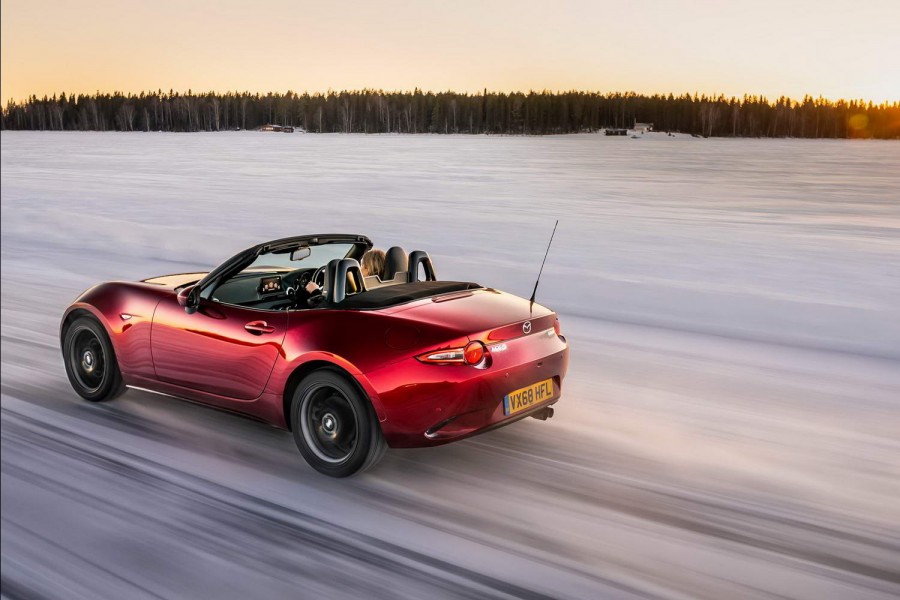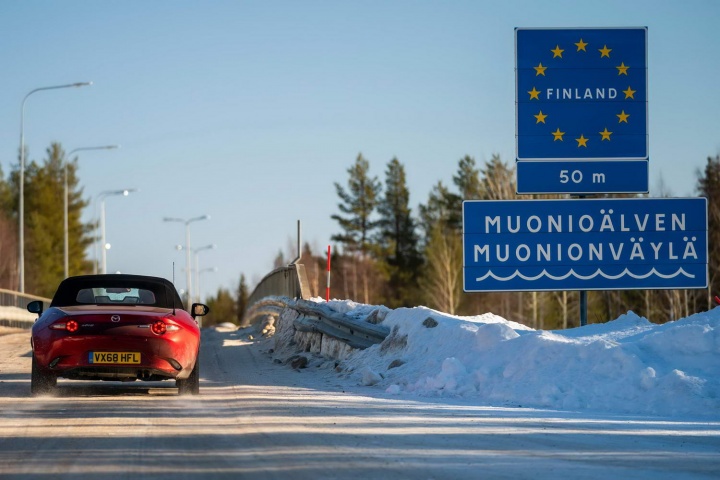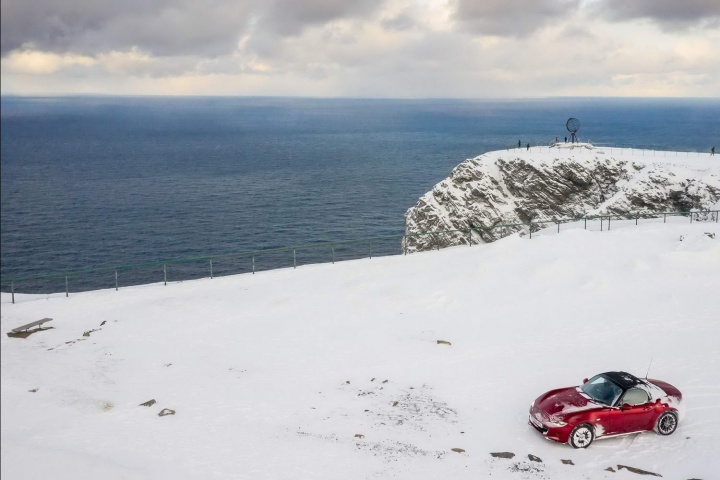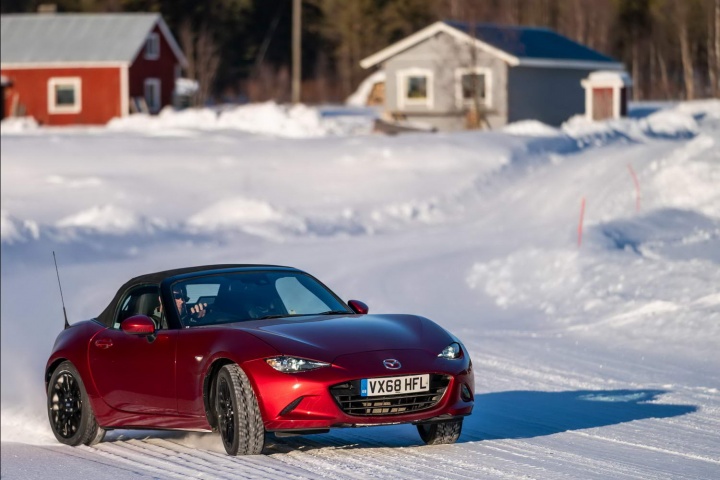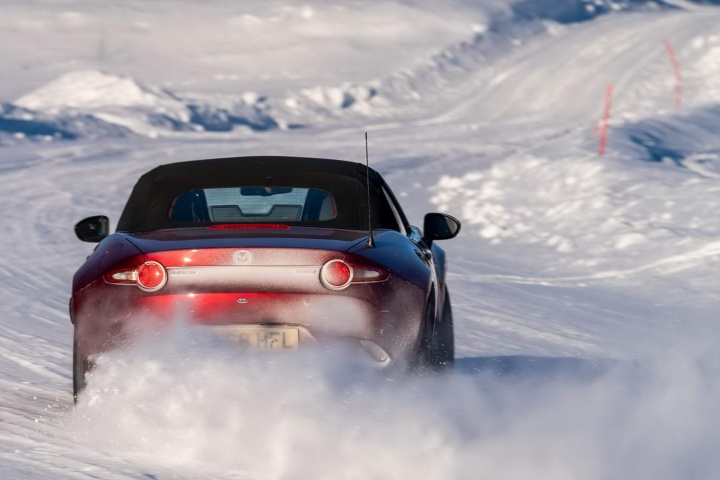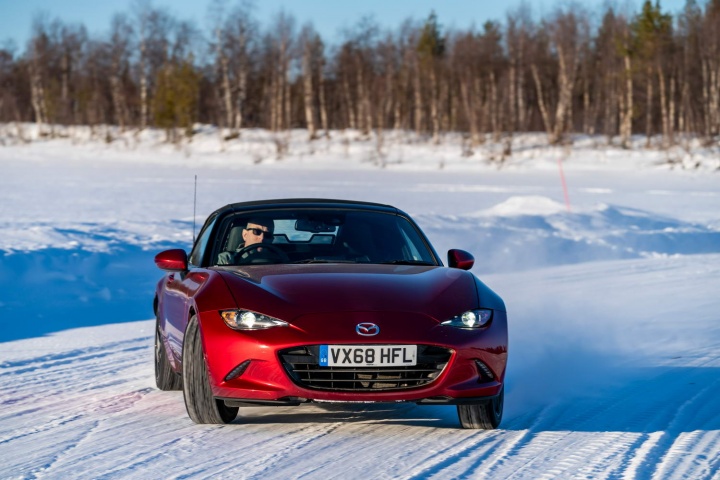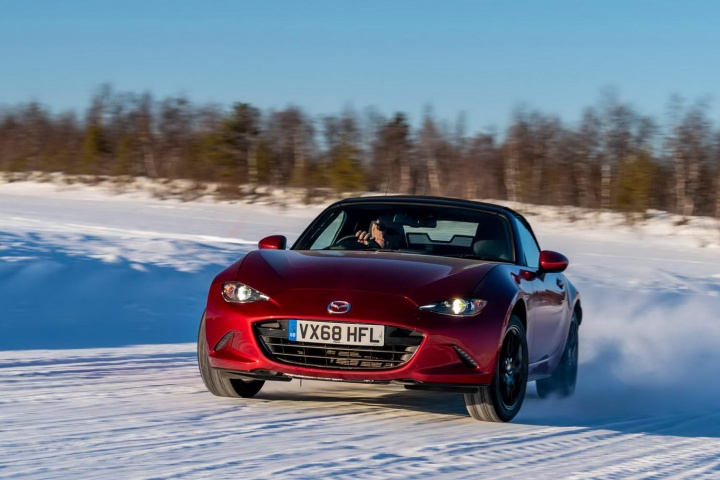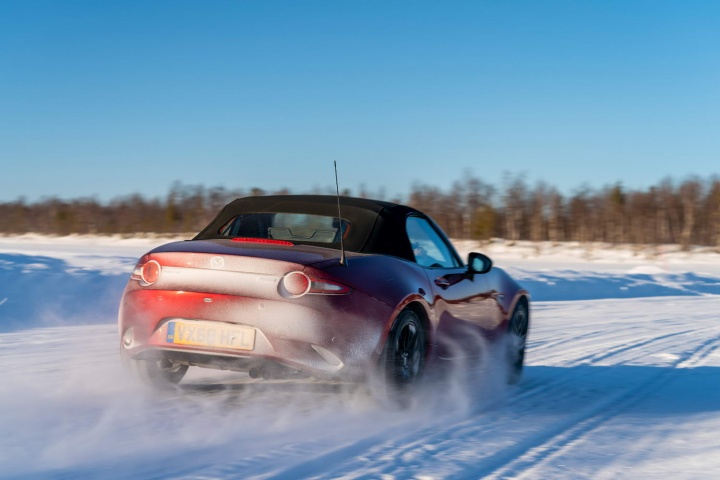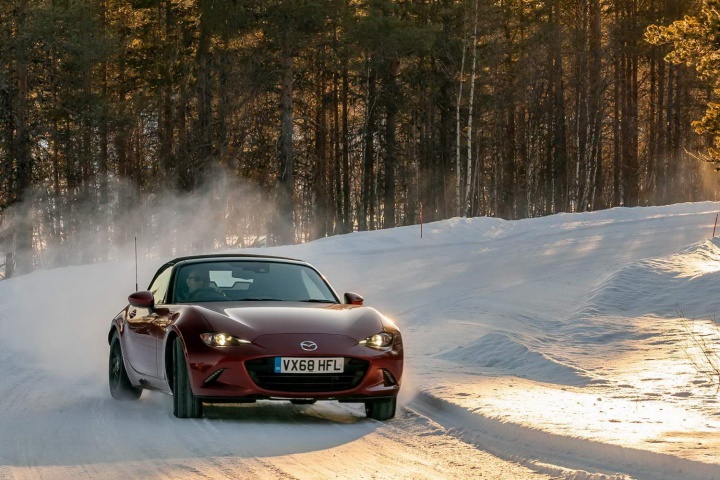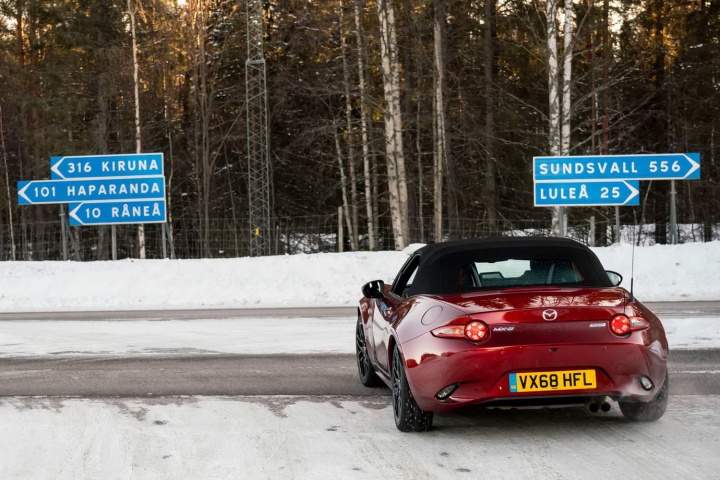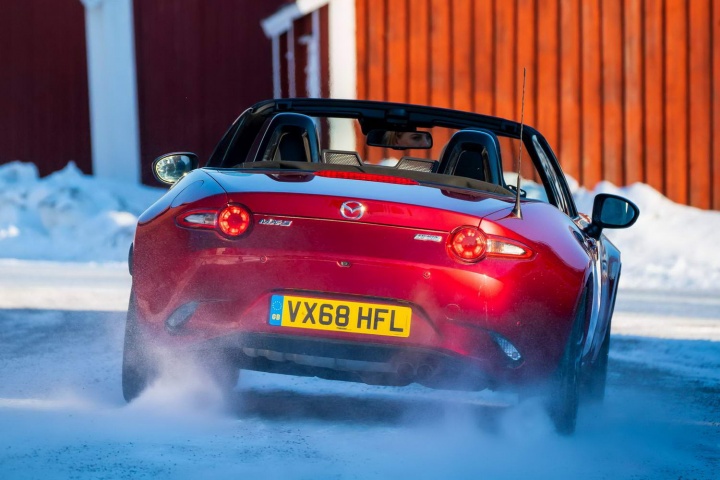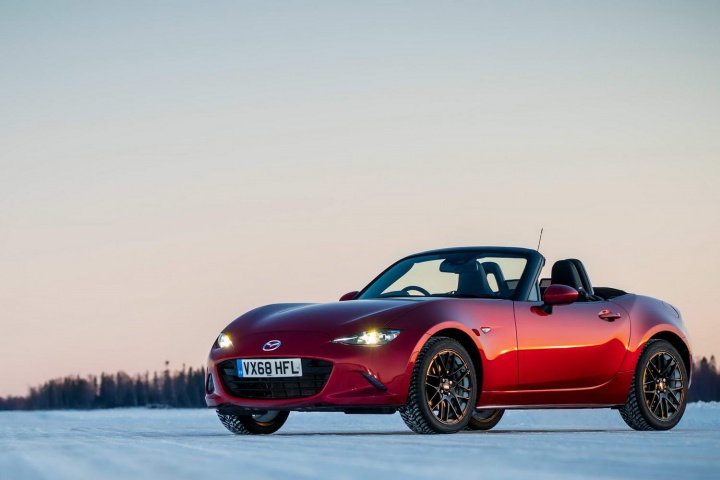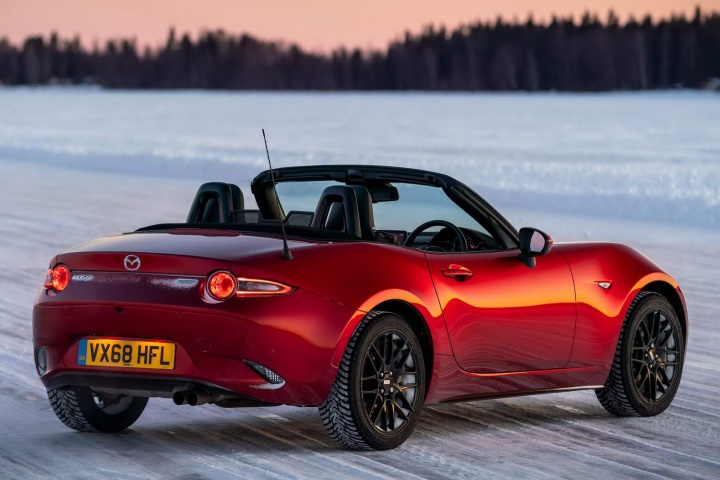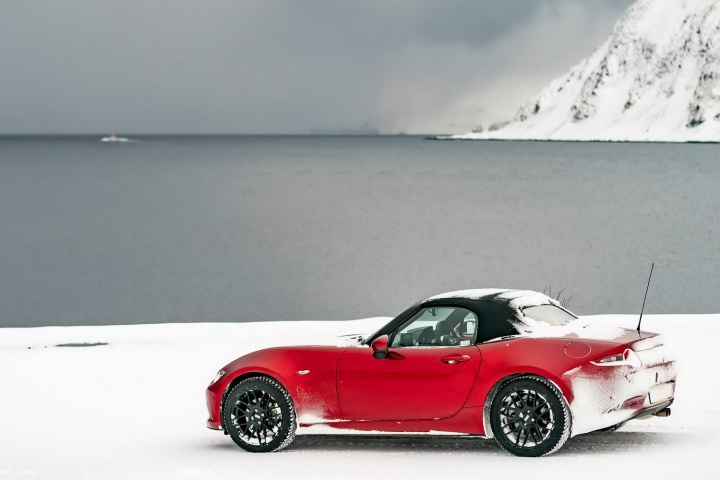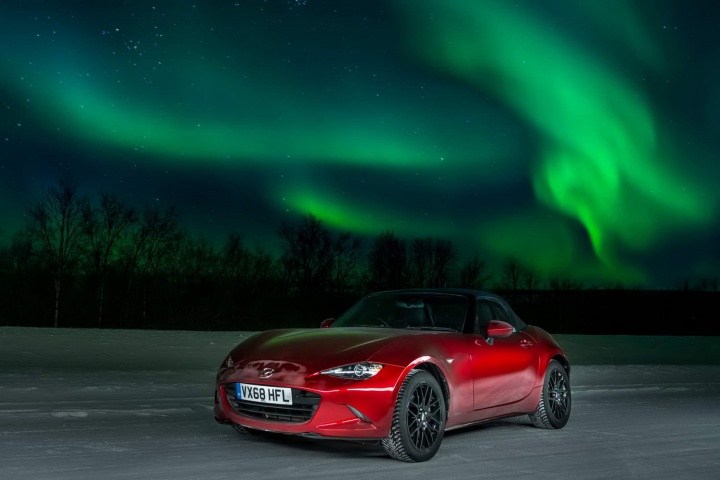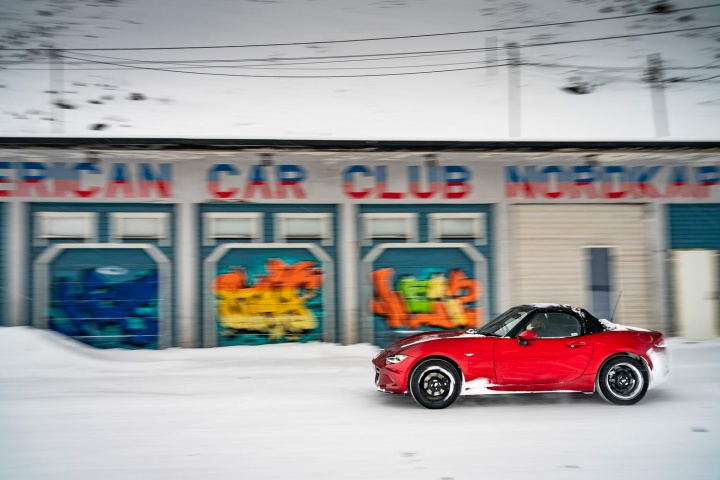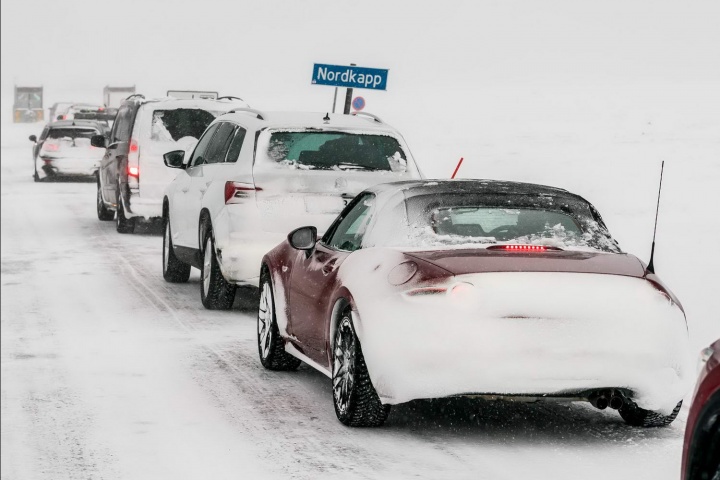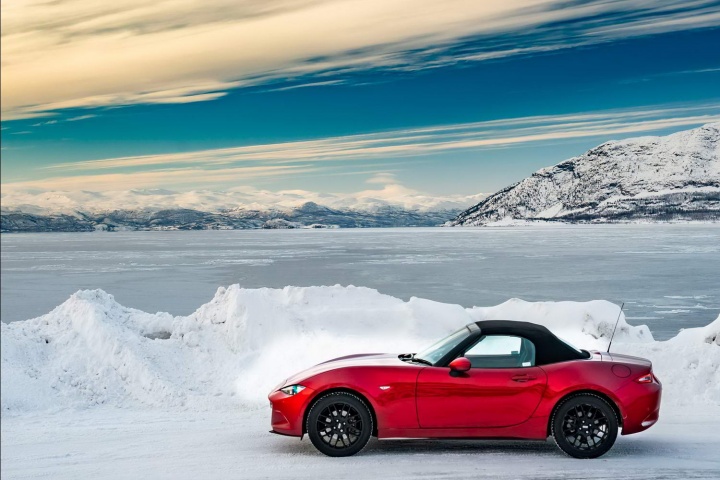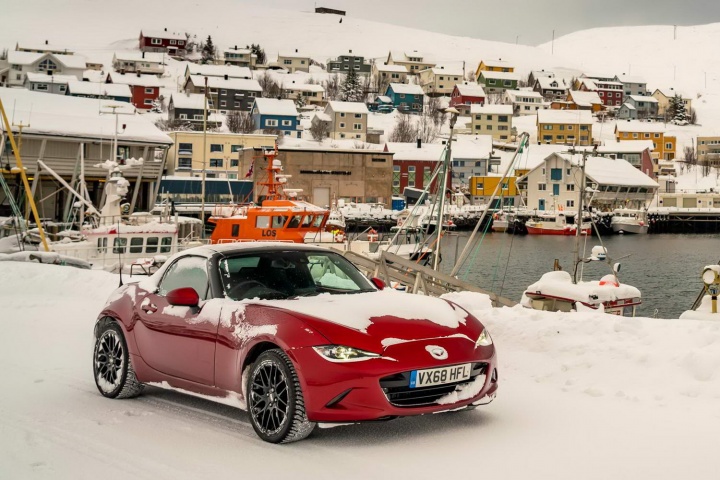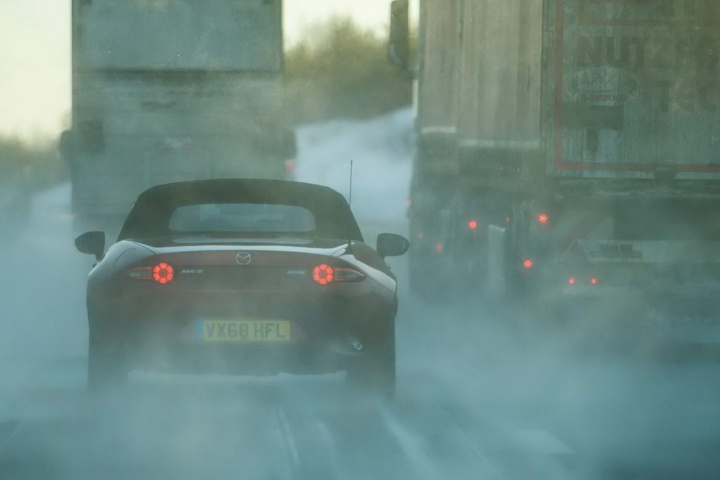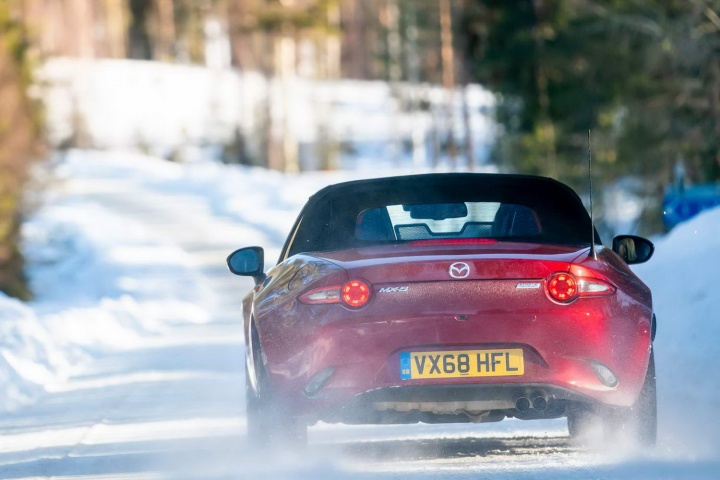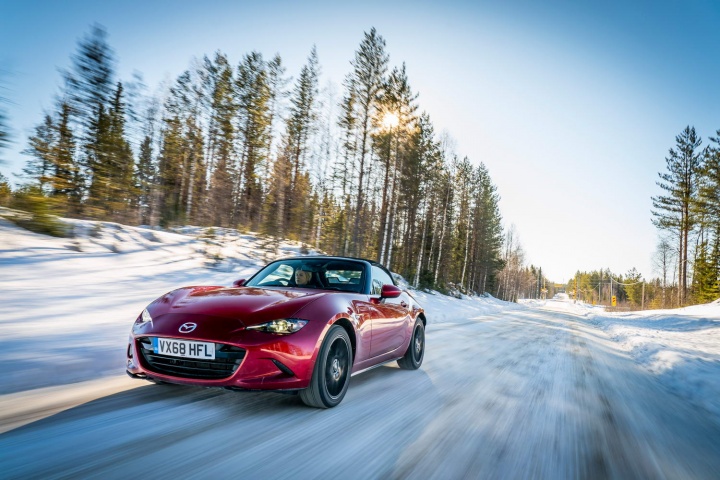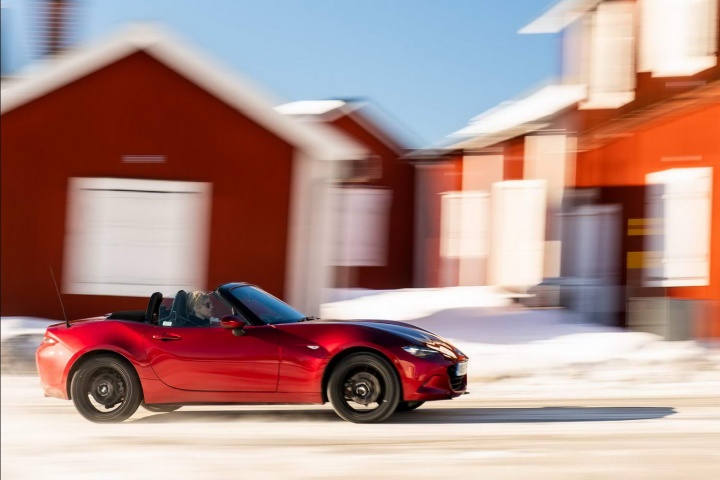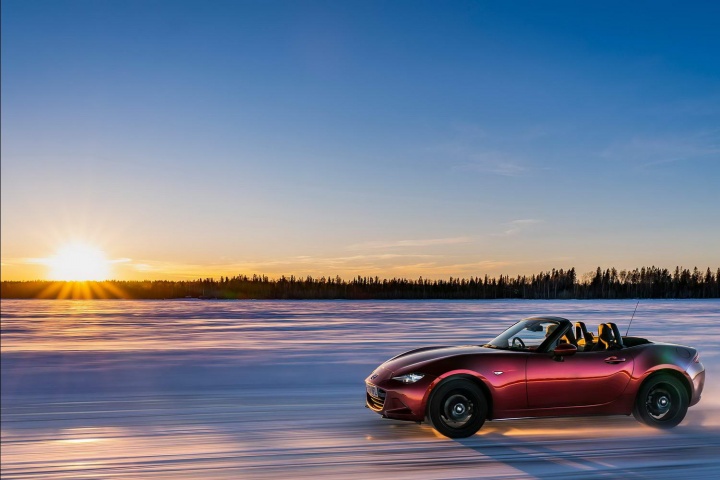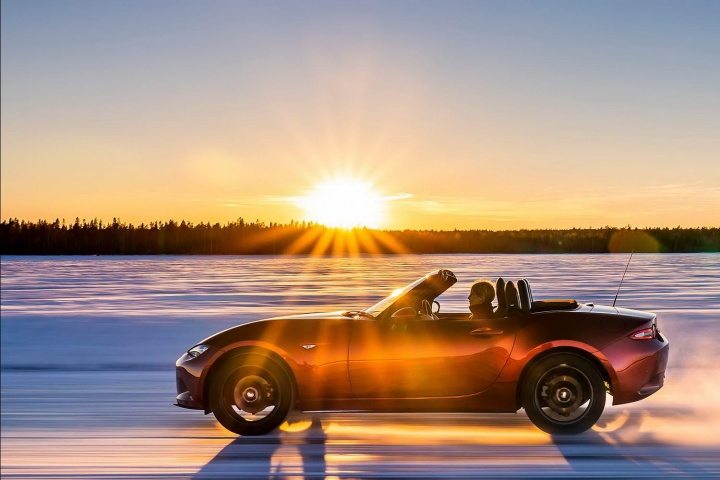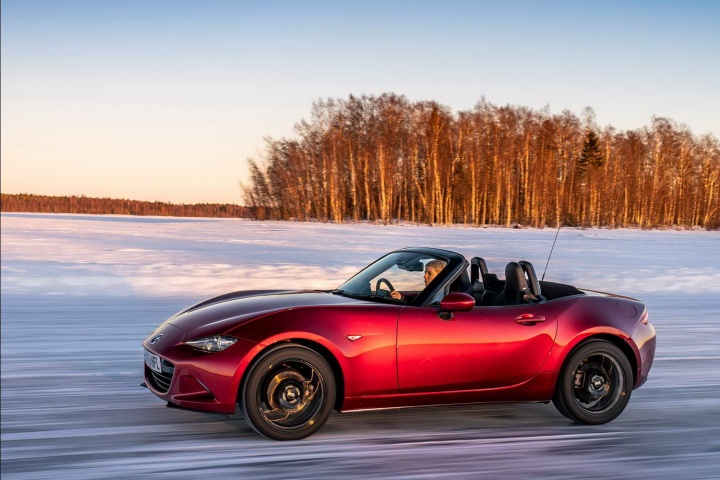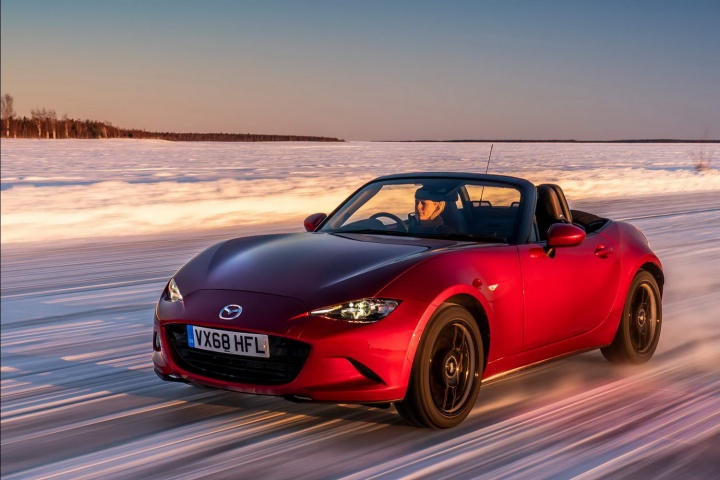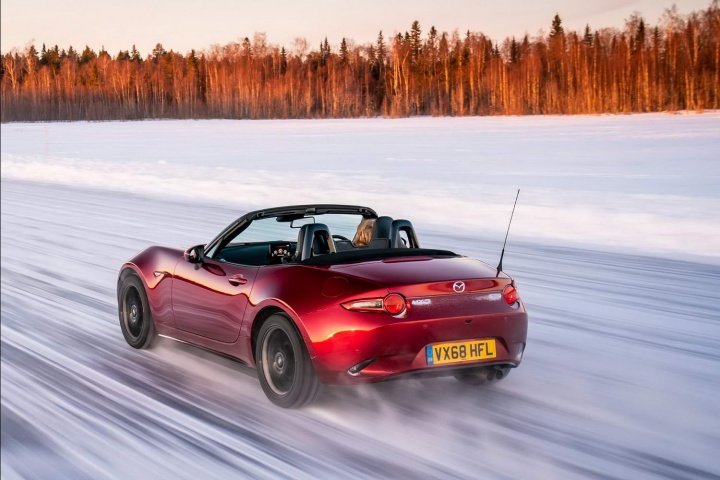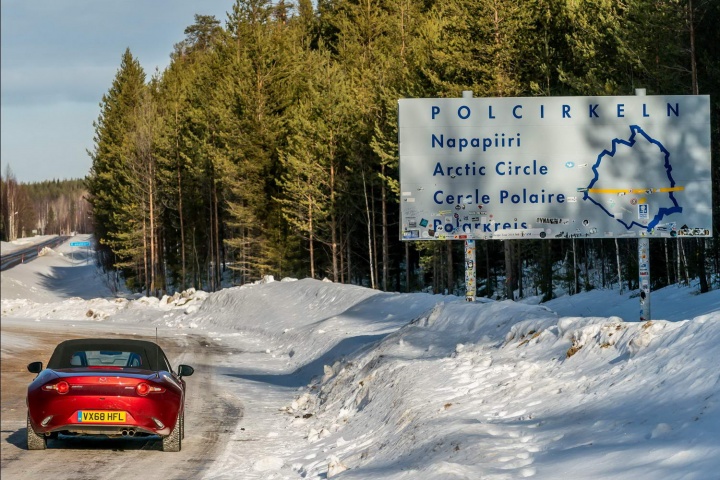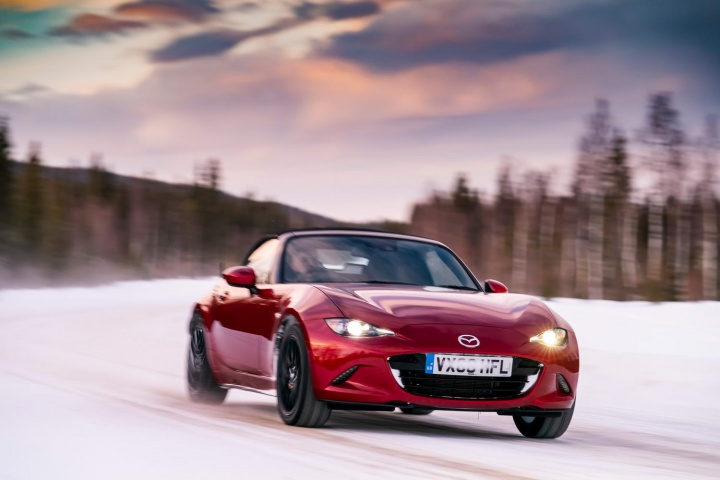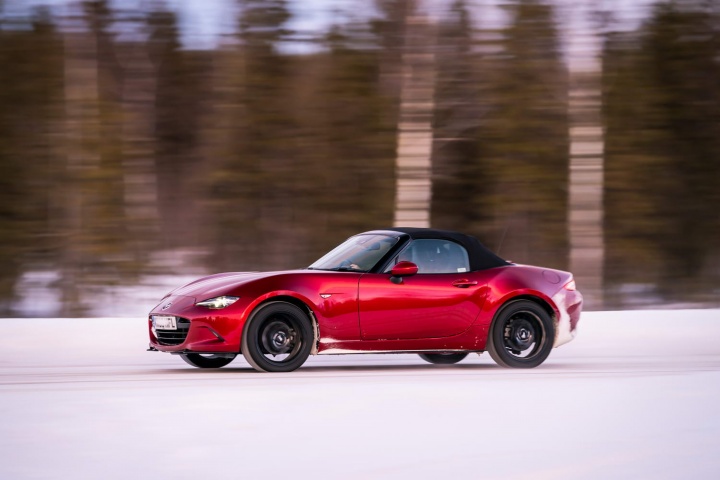The truly scary thing about standing on the surface of a frozen lake is that you can see the water. The thick crust of ice that forms on the Gulf of Bothnia - the body of water that separates the east coast of Sweden from the west coast of Finland - is thick enough that the water becomes a regular roadway, giving the Swedish town of Lulea a handy spare bypass in the winter.
The ice is thick, but the water is pure and clean so the ice is also largely transparent - you can see the unfrozen lower reaches of the water moving along underneath if you dare to descend from your car and slip-slide your way across the surface. It's unnerving but unforgettable. It's also as slippery as fresh Teflon and my Doc Marten brogues are proving to be less than ideal Arctic shoes, so I get back in the car.
While I was struggling to stand up on the ice, the Mazda MX-5 remained calm and composed. It helps that it had been equipped with some serious winter-spec tyres, their treads pimpled with steel studs to bite into the ice (yep, I'm driving on a frozen harbour and using bits of steel to dig into the ice that's keeping me from drowning...) and mounted on gorgeous, optional, BBS alloy wheels that chime perfectly with the car's deep Soul Red Crystal paint job.
The MX-5 is thirty this year, first launched way back in 1989. It was conceived by Kenichi Yamamoto, Mazda's legendary head of engineering and the man who'd made the rotary engine work (well, mostly) when others had failed. He was aided by the Japanese company's R&D boss, Gai Arai and by Californian Bob Bell. Bell wasn't an engineer - he was a writer for Motor Trend magazine who'd befriended Yamamoto on a student exchange years before, and had heard that Mazda was developing something very different to the late-eighties norm; a small, affordable, sports car.
Mazda was puzzling over what sort of car it should be, but (thankfully) Bell convinced them that they should discard their options of a front-drive platform, based on the 323 hatchback, or a mid-engined car to rival the Toyota MR2, and instead create a modern-day Lotus Elan, a tribute to the cars Bell had so adored in his Californian childhood.
Four generations on, Bell was clearly right, and Yamamoto and Arai clearly right to listen to him. The MX-5, four generations and a million sales on, has lived a longer, three-decade, life than any of the classic sixties sports cars that inspired it, and has steadfastly refused to give into bloat or weight gain - the current model weighs barely more than a tonne, which is no small relief when you're driving one half a mile offshore...
For its birthday, Mazda has given the MX-5 a new engine - well, not totally new. It's the venerable 2.0-litre SkyActiv-G petrol engine, but with some extra horsepower liberated, bringing the total to 184hp. Picking the 2.0-litre over the cheaper 1.5 (still a fab car, mind) also gets you a limited slip differential. Which is obviously going to be useful out here.
The rest is as it has always been. Rev-happy engine up front, two seats (with heating elements, thank feck) in the middle and power going to the rear and the rear only. Garnish with delightful steering and the best manual gearshift of any car currently on sale, and you have a tiny slice of vehicular perfection.
In the Arctic, though? I don't doubt for a minute the veracity of warnings over mankind's damage to the environment, nor our spiking global temperatures, but in Lulea it's cold. Proper cold. Even with blue skies and bright sunshine, the temperature is struggling to get above -20 degrees and snow and ice are everywhere. We're not only going to drive on those snow-packed roads, but we're going to drive like hell on them - the plan is to cover the 860km from Lulea to the Nordkapp in just ten hours.
Not possible? Should we go back and exchange our low-riding MX-5 for the ancient Mazda BT-50 pickup that's providing backup and snatch-towing heft for the journey? Surprisingly not, as the MX-5 proves exceptionally adept at tackling these conditions. The tyres are the key, obviously, but lay some credit at the door of truly brilliant traction and stability control, which allow you a bit of hero-rating sideways angle before helping you straighten up. Thank also the MX-5's basic mechanical and suspension makeup - by harking back to those sixties originals, the very cars that it has out-lived and out-sold, the MX-5 is basically designed in its DNA to enjoy being driven slightly sideways of straight-ahead.
And so we just go. Occasionally giving the little steering wheel a jab of opposite lock as a deep patch of snow snatches at the tyres, occasionally clenching buttocks and praying quietly as a plume of snow crystals and the disturbed air from a passing truck (speed limiters for HGVs are apparently optional this far north) blast over our open cockpit. Away from the trucks, this is just amazing driving - the bright, clear Arctic skies above, while heavy jackets, woolly hats and the always-on seat heaters keep us toasty and warm.
Across the Arctic Circle and up through Finland, we start to notice the incredulous stares of locals. One, observing us pulling into a Finnish petrol station for a splash-and-dash, just comes right out and asks if we're crazy. No, we reply; we're journalists, but his estimation of our mental health plunges yet further when he finds out where we're driving.
To be honest, we did eventually think ourselves crazy at one point. Deep into Norway, north of the vast Alta Fjord, the weather closed in. The closer we got to the Cape, the taller and blacker became the clouds. Thankfully they contained snow showers, rather than constant flake-fall, but they were blizzard-like intensity and fog-like in their invisibility. Our only options were to stop, put the roof up and turn back, or press on, trusting in the bright orange poles that stick up to mark out the edges of the road. The second one worked, and with occasional breaks in the snow and cloud, we kept going.
The further north we went, the more rugged and breath-taking became the scenery. The expanses of Sweden and Finland that we crossed were relatively low-lying forest - long, endless lines of trees sprinkled with a gentle frosting of snow. Up here in Norway, the treeline thinned out and the vast, craggy sides of the fjords appeared, rendered into black-and-white by metre-deep snow. Just us, our red MX-5, and the forbidding surfaces of the rocks and the dark-hued Arctic seas. Diving through the long tunnels that connect the Cape (it's actually an island) with the mainland, we would emerge into backdrops that seemed they were pure Hollywood CGI, lit by a perfect mix of twilight sky, reflecting off the snow and the grey clouds.
To look at, you'd assume this is an environment that behoves you to have a big 4x4, but no - thanks to its tyres, the MX-5 kept finding grip where your eyes told you there'd be none. Kept finding bite for the brakes then you assumed that there was not enough mu in the surface for anything other than sliding into a snowbank. It was a truly remarkable mechanical performance, and proof that money spent on supposedly rugged SUVs is better by far spent on having the right tyres.
Arriving at the North Cape itself, all was in darkness, with the biting winds driving shrapnel-like flurries over snow in off the sea. It's as forbidding an environment as you could imagine, and twice as remote - standing atop the 300-metre cliff that plunges to the icy sea, we were closer to the North Pole than to home. And we'd got there in a sports car, a car whose design originated in the heat and sunshine of California. You'd assume that such a car would never survive, certainly not complete, a taxing journey such as this, but the MX-5 did. Helped by its tyres? Of course, but helped too by its sturdy construction, its wonderful handling balance and its simple ruggedness. For less than €30,000 (for a basic 1.5 model) plus the price of the winter tyres, you too could have this SUV-besting capability in a car designed, all but purely, for fun behind the wheel. A frozen harbour and 860km of Arctic roads didn't faze the MX-5 - they just brought out its best.

